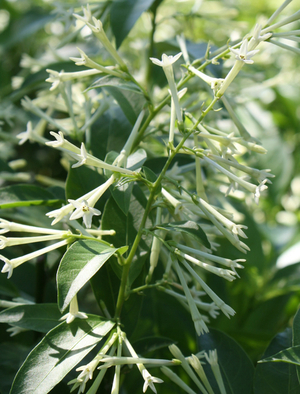A Parade of New Native Perennials for Pollinators
Hairy Mountainmint
.jpg)
Hairy Mountainmint
Pycnanthemum verticillatum var. pilosum
One of our newest native plant additions, Hairy Mountainmint, Pycnanthemum verticillatum var. pilosum, is abuzz with pollinators this summer. Mountainmints, a.k.a. Mountain Mint, are known for their ability to attract a variety of pollinators. The dense clusters of short tubular white to light lavender flowers are rich with high quality nectar and pollen. Use the running types, like Clustered and Hairy Mountainmint, as taller groundcovers in natural areas like meadows, prairies, on roadsides, and in containers. The clump forming types like, Narrowleaf, Whiteleaf, and Appalachain Mountainmint, make easy additions to herb and informal cottage garden settings. Due to their fragrant foliage the deer, rabbits, and other grazers don’t normally bother with them. For average to well-drained drier locations that may experience short periods of drought, Whiteleaf and Hairy Mountainmints fit the bill. You can use practically any of them in average moist soils. For wetter locations consider using Appalachain and Narrowleaf Mountainmints, although most of the other species can be found in fairly moist settings. Plant a Mountainmint, if not for its fragrant foliage then for native bees and the multitude of other pollinators that utilize them throughout the summer months.
Handsome Harry or Virginia Meadow Beauty
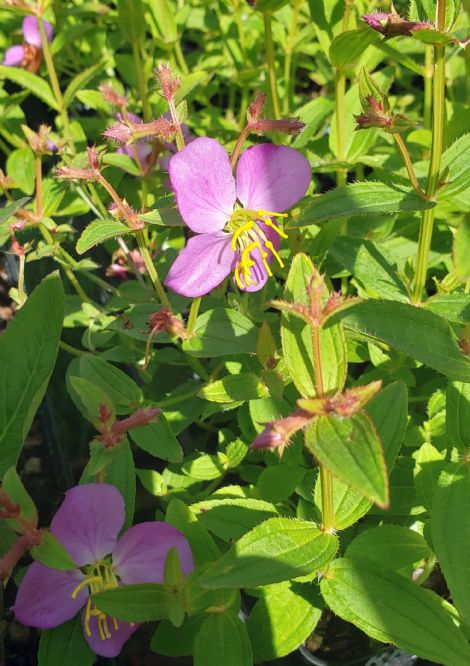
Handsome Harry or Virginia Meadow Beauty
Rhexia virginica
Handsome-Harry or Virginia Meadow Beauty, Rhexia virginica, creates a mass of burgundy tinged foliage and stems that are topped with loose clusters of rosy pink, 4-petaled flowers over much of summer. A close kin of the tropical Tibouchina or Princess Flower, this hardy native develops into a ground-covering mass of 12-24” high stems but is not an aggressive or an uncontrollable species. It is typically found growing in areas with moist sandy soils, along the edges of ponds and swamps and other consistently moist sites but also does well in average moist soils once well-established. Handsome Harry should make a good native for container culture and bog gardens as well as in naturalistic cottage gardens. The flowers must be buzz pollinated by native bees before the stamens will release their pollen. Even though most in this family are tropical species, Rhexia virginica is found as far north as central Wisconsin east to Maine and south to Florida and Louisiana
Downy Lobelia
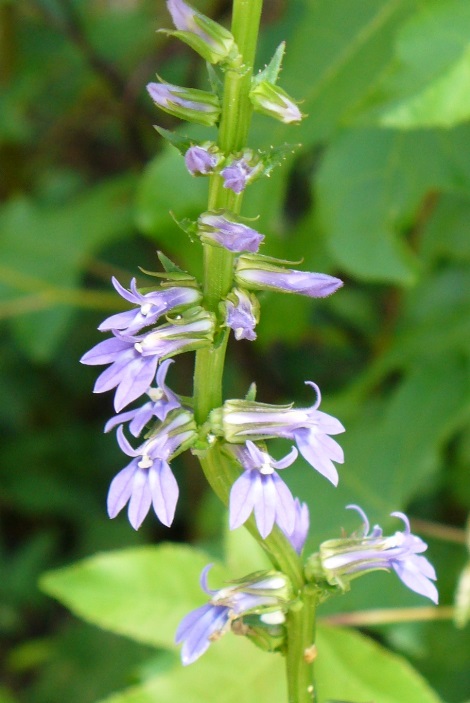
Downy Lobelia
Lobelia puberula
Downy Lobelia, Lobelia puberula, produces 18-24” high spikes of blue to purple flowers with white to light yellow bee guides beginning in mid to late summer and continuing into fall. This is a taprooted clump-forming native perennial that is fairly adaptable to soil moisture types from wet to moist to periodically dry. It can be found in the clay soils of the Cajun Prairie as well as the drier sandy uplands of the Pineywoods. The blue to purple, short tubular flowers are mainly bee pollinated. It may not be quite as showy as Great Blue Lobelia and the Red Cardinal Flower, but we think it will be a longer-lived Lobelia species that is better suited to average to drier garden soils. Use it for late summer and fall color in cottage gardens and naturalistic settings.
Boneset
.JPG)
Boneset
Eupatorium perfoliatum
Boneset or Common Boneset, Eupatorium perfoliatum, is so named because it was thought that it could be used as an herb to help mend broken bones. It may be due to the fact that the unusual opposite foliage fuses together at their bases. This is a clump forming native perennial that produces large flattened clusters composed of tiny white flowers atop the velvety medium green foliage. The flowers attract a variety of smaller pollinators including bees and other garden beneficials. Boneset can be found in wet to consistently moist soils and is adaptable to average moist soils where it receives midday and or afternoon shade. We have an older plant that is along the path I take to work everyday growing at the base of a Sweetgum in fairly dry loamy sandy soil.
Black Truffle Cardinal Flower
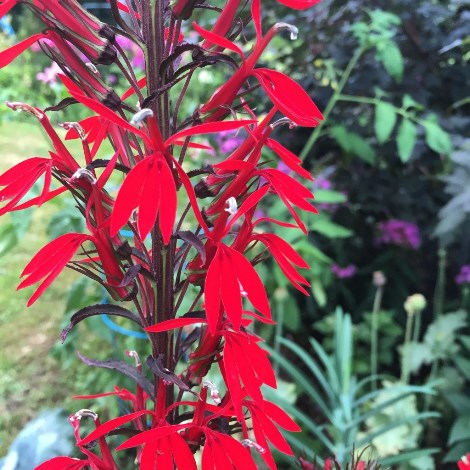
Black Truffle Cardinal Flower
Lobelia cardinalis 'Black Truffle' PP25687
For darkly contrasting foliage and brilliant red hummingbird-attracting flowers check out Black Truffle Cardinal Flower. This is a dark foliaged selection of our native Cardinal Flower, Lobelia cardinalis, with deep chocolate to near black foliage that produces the same intense glowing-red flowers of its parent. Use it where its dark leaves and stems can contrast with that of chartreuse colored companions. Like the Red Cardinal Flower, Black Truffle will prefer consistently moist to wet soils making it a great choice for bog gardens and other areas with consistently moist soil. It will have the darkest colored foliage where it is grown in a full to mostly sunny position. Image courtesy of Plants Nouveau, all rights reserved.
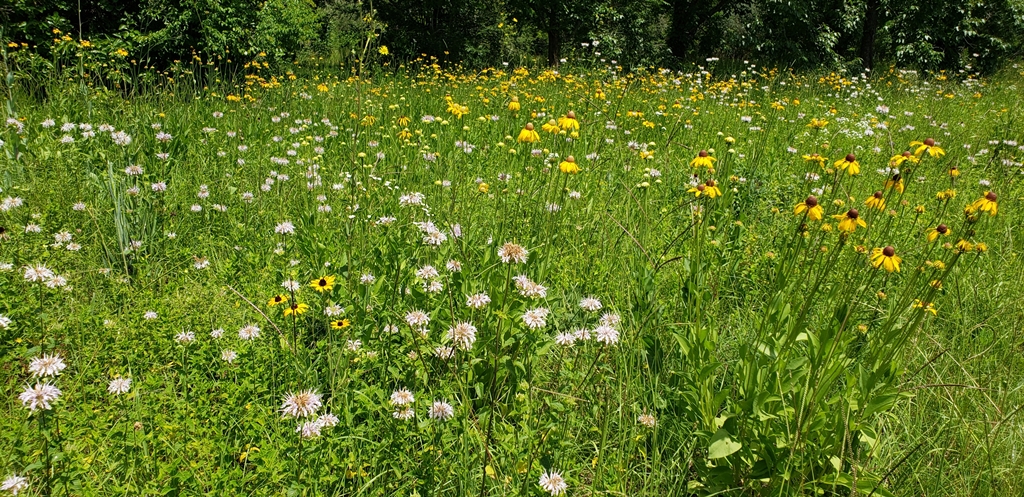
Create Your Own "Once-Mown" Meadow or Prairie for Pollinators
If you would like to learn how to develop a once-mown, exceptionally low-maintenance wildflower meadow or prairie for pollinators check out Jeff’s article on how we developed our own meadows. Here is the opening paragraph:
You can easily develop an exceptionally low maintenance, spring-fall flowering, natural wildflower meadow filled with diverse high-quality native plants for pollinators that has one single annual maintenance requirement to keep it healthy and increasing in quality over time – mow it once in winter. We have adapted what would normally require an annual controlled burn using mowing to achieve the same desired effect. Some of the highest quality, most diverse natural meadows and prairies exist along utility line right of ways and railroads where these areas receive the same annual mowing treatment. In nature, our tall grass prairies, conifer forests (Longleaf Pine, Redwood), savannas, and even the acid pitcher plant bogs of the wet and humid southeastern US have come to depend on fire to clear the soil of dead foliage and to prune back existing vegetation. The fire creates a ‘disturbance’ that exposes the soil’s surface to the sunlight that many of these native species need for good germination as well as reducing existing competition. Fire also helps to thin and crack seed coats of some important species and a good mowing machine can have a similar effect. Over a period of just a few years, what may have once been an area of high maintenance monoculture grass or unsightly weeds can become a reliable, high-quality, and long-term source of nectar, pollen, and habitat. A diverse mix of annual, biennial, and perennial forbs (broadleaf herbaceous plants) and graminoids (grass-like plants - grasses, sedges, rushes, etal.) has the potential to support a diverse cast of native pollinators, beneficial insect predators, songbirds, and many other cute and cuddly critters. This is a project that a family, school, or a community can do, enjoy, and learn from together but it is also simple enough to be completed by an individual.
This guide also includes a list of over 200 species that are found in the Cajun Prairie or Coastal Prairies of Louisiana and eastern Texas and the over 80 species that happily coexist in our own meadows.
To learn more visit our Growing Guides page or click the link below:
https://www.almostedenplants.com/shopping/c/oncemownmeadowplantingguide/
Properly Uppotting or Repotting a Container Grown Plant

Properly Uppotting or Repotting a Container Grown Plant
One of the biggest mistakes that people make when uppotting or repotting container grown plants is that they are too generous with the container size. 99.99% of the time the gap between the plant’s existing rootball and the sides and bottom of the container should be no more than 2-4”. Yes, there are some very vigorously growing plants that may tolerate larger containers, like Tomatoes and Coleus, but these are the exceptions and they may be healthier if they are stepped up in container size as well. For cactus and other low water usage species 1” of space between the rootball and container sides is more typical. What happens is that there is too much soil that is not utilized and it stays saturated for too long drowning the root hairs which are responsible for water and nutrient uptake. At this point, the plant starts to wilt since it is drying up even though the soil is wet. In our latest growing guide, we go in-depth into how to properly uppot and repot a plant, container size selection, potting soil selection, proper watering techniques, what your foliage can tell you about your plants, and more. There should be pearls of wisdom for even the most experienced gardeners. We hope this latest addition to our Growing Guides helps to get your plants growing and thriving! See the link below to learn more:
https://www.almostedenplants.com/shopping/c/containerpottingguide/
You can find all of our Growing Guides at: https://www.almostedenplants.com/shopping/shopcontent.asp?type=growingguides
A Hot Pink 'Indeterminate' Hardy Hibiscus for Summer-Long Color
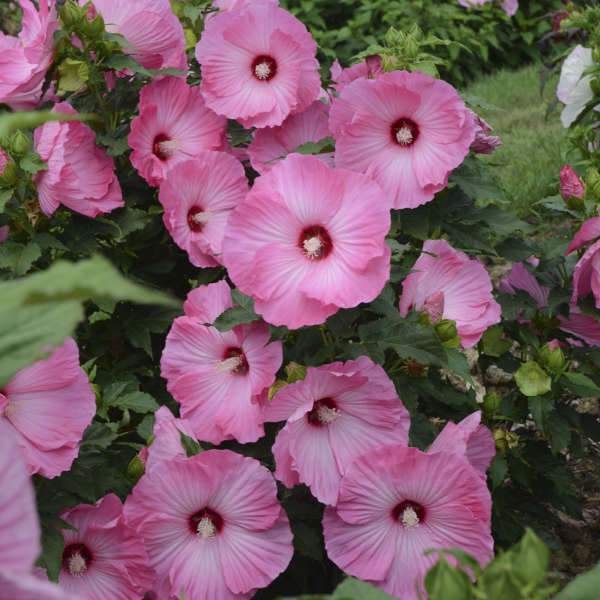
Airbrush Effect Hardy or Perennial Hibiscus
Airbrush Effect Hardy or Perennial Hibiscus produces 8-10” wide pink flowers with overlapping petals 'airbrushed' with white extending to near the middle of the flowers and with a deep red eye are produced over an extended period beginning in late spring to early summer (depending on your zone) and flowering into fall. Airbrush Effect Perennial or Hardy Hibiscus is an 'indeterminate' flowering selection meaning that it flowers over a longer period than older cultivars. This is a compact 3-4'H x 4-5'W plant with rich green foliage well suited to moist sunny sites in the garden and landscape. Provide a moderately fertile soil to help encourage vigorous growth and flowering.
For more on how to be successful with Hardy or Perennial Hibiscus as well as the Confederate Rose check out growing guide at: https://almostedenplants.com/shopping/c/hardyhibiscusgrowingguide/
Image courtesy of Walter's Gardens, Inc., all rights reserved.
![]()

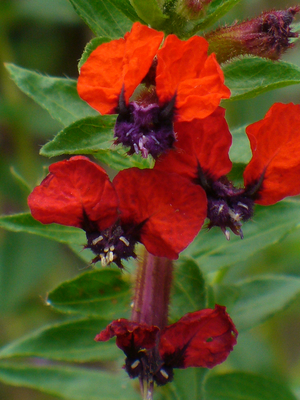
-1.JPG)
.JPG)

